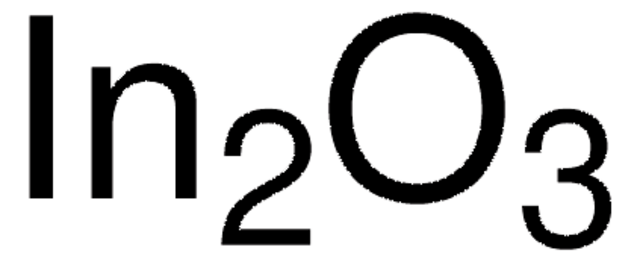578274
Indium tin oxide coated glass slide, rectangular
surface resistivity 8-12 Ω/sq, slide
Synonym(s):
ITO, ITO coated slide, rectangular
About This Item
Recommended Products
packaging
pack of 10 slides
pack of 25 slides
surface resistivity
8-12 Ω/sq
L × W × thickness
75 mm × 25 mm × 1.1 mm
transmittance
>83%
refractive index
n20/D 1.517 (lit.)
SMILES string
O=[Sn]=O.O=[In]O[In]=O
InChI
1S/2In.5O.Sn
InChI key
LNNWKAUHKIHCKO-UHFFFAOYSA-N
Looking for similar products? Visit Product Comparison Guide
General description
Application
Some other uses that have been reported are:
- Eumelanin samples prepared on ITO covered glass substrates.
- Interface windows of the liquid cell for optical beam delection (OBD) sensing contain a 20-nm-thick indium tin oxide film
- Mesoporous TiO2 films were formed on ITO conductive glasses
Physical properties
Resistance may increase to as high as 30 Ω when exposed to temperatures of 300 °C for 30 minutes or more.
Storage Class Code
13 - Non Combustible Solids
WGK
WGK 3
Flash Point(F)
Not applicable
Flash Point(C)
Not applicable
Personal Protective Equipment
Choose from one of the most recent versions:
Already Own This Product?
Find documentation for the products that you have recently purchased in the Document Library.
Customers Also Viewed
Articles
In this article, we demonstrate that bis-styrylbenzene derivatives show promising characteristics for very low lasing thresholds and discuss the design considerations for organic lasing molecules.
Professor Shinar (Iowa State University, USA) summarizes the developments of a variety of sensor configurations based on organic and hybrid electronics, as low-cost, disposable, non-invasive, wearable bioelectronics for healthcare.
Organic photovoltaics (OPVs) represent a low-cost, lightweight, and scalable alternative to conventional solar cells. While significant progress has been made in the development of conventional bulk heterojunction cells, new approaches are required to achieve the performance and stability necessary to enable commercially successful OPVs.
A transparent conductive electrode (TCE) is an essential component of various optoelectronic devices such as solar cells, liquid-crystal displays (LCD), light-emitting diodes (LED), and touch screens.
Our team of scientists has experience in all areas of research including Life Science, Material Science, Chemical Synthesis, Chromatography, Analytical and many others.
Contact Technical Service


